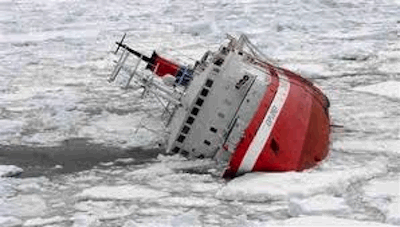Its been a mostly mid Autumn, but winter is creeping in. We know all of you are all doing your Winter preparation projects for your boats. Likewise, we are working on maintenance for the piers and Community areas.
New piling caps are going on so that the piling will last as long as possible. More sand is being added at Fishing creek so the little beach will be ready for Spring. We will also be adding more and better gravel to the walkway and adding larger rocks to the wall to prevent erosion within flooding.
Here are some tips for winterizing your boat, compliments of skippertips.com

Drain the raw-water system.
Add fresh coolant to your fresh water system.
Change your engine oil and engine oil filter.
Spray lubricant over your engine body (**see note below).
Squirt oil into the air intake manifold to protect pistons and cylinders.*Note…
Take care not to get any spray on your hoses or belts;
lubricants like WD-40 cause rubber products to soften.
Also, with winter will come extremely low tides. So if you boat is in the water, you may need to check its lines.
Hope everyone has a warm, safe and happy 2015.
New piling caps are going on so that the piling will last as long as possible. More sand is being added at Fishing creek so the little beach will be ready for Spring. We will also be adding more and better gravel to the walkway and adding larger rocks to the wall to prevent erosion within flooding.
Here are some tips for winterizing your boat, compliments of skippertips.com
Seven Steps to Winterize and Protect Your Boat
Are you sure that no water has become trapped in the hoses aboard your small cruising boat? Have you gone through a seven-point-checklist to protect your small boat diesel from damage over the cold months?
Add extra years of quality sailing life when you follow the advice of author John Vigor. In his book, “The Practical Mariner’s Book of Knowledge“, John V. goes into great detail on how to winterize your boat–the right way! Follow these seven steps to give your boat the best protection possible…
 |
| Ice can expand and do lots of damage |
1. Think “Water Trap”
Open up hatches and access lockers. Look behind the head. Any water line with a low bend can trap water, allow it to freeze, and crack the line. John Vigor recommends you add “a 50/50 solution of vodka” to your water lines that come from the water tank.
2. Cover and Ventilate
Rain water, sleet, snow, and condensation combine like termites to find any opening, crack, or crevice. Use covers to divert the water overboard. Allow ventilation through the cover to keep the boat dry and problem-free.
3. Attack the Hull
Scrape the bottom before it dries. Those bottom residential crispy critters will dry like epoxy unless you remove them the moment your hull exits the water. Next, plug up all thru-hulls, such as the engine raw-water intake, transducers, and seacock openings. Remove vents and cowls from the deck and replace them with tight fitting covers. This keeps dirt, dust, and insects out of your lines and interior.
4. Replace Metal Protectors
Remove and replace all zincs from the bottom of the hull. Even if they look alright, do it anyway. It’s cheap insurance and you won’t need to fool with it in the spring. Next, replace the pencil zincs in your small boat diesel raw water system. Call your engine manufacturer if you are unsure where they’re located.
5. Work Through this 5-Point Engine Check
Follow your small boat diesel manuals winterization process. If you are unsure, or you find the manual unclear, follow these seven-points…
Take care not to get any spray on your hoses or belts;
lubricants like WD-40 cause rubber products to soften.
6. Make a Warning Sign
Prevent damage to your small sailboat diesel in the spring. You don’t want to start her up until you remove the plugs on the intake. Use a magic marker and poster-board and make two signs: “DO NOT START ENGINE UNTIL ALL PLUGS ARE REMOVED”. Post one on the engine hatch cover and another next to your starter button. This will insure you against costly engine damage later on.
7. Remove and Charge All Batteries
Take the house and engine-start batteries off the boat and store them in a dry room. Hook up a battery charger and check them once a week to make sure they maintain a full charge throughout the winter.
Also, with winter will come extremely low tides. So if you boat is in the water, you may need to check its lines.
 |
| Fishing Creek Pier February 2012 |
